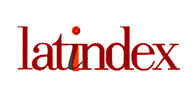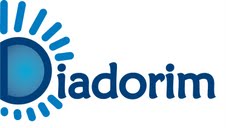O PAPEL DA ATIVIDADE FÍSICA NA COMPOSIÇÃO CORPORAL DE IDOSOS
DOI:
https://doi.org/10.13037/rbcs.vol1n1.495Palavras-chave:
atividade física, composição corporal, idosos.Resumo
Dados têm demonstrado que no Brasil o número de idosos
tem crescido exponencialmente. O processo de
envelhecimento vem acompanhado de mudanças na
composição e no peso corporal. Além disso, a prevalência
da obesidade e do sobrepeso também vem crescendo neste
segmento da população. Esta tendência produz
conseqüências adversas para a saúde, como o aumento
do risco para doenças crônicas não transmissíveis.
Conseqüentemente, o aumento de tais doenças tem gerado
custos elevados para a área da saúde. A atividade física
tem sido amplamente empregada, como estratégia para o
controle de peso de idosos. Portanto, este trabalho teve
como objetivo descrever estudos que relataram o papel da
atividade física no controle de peso e na composiçãocorporal de idosos. Os resultados indicaram que para
idosos obesos o exercício aeróbico não resulta em perdas
consideráveis de peso, devendo estar associado a
mudanças nos hábitos alimentares. Já exercício com pesos
em doses adequadas produziu mudanças significativas
na composição corporal. Evidências epidemiológicas
demonstraram que a manutenção de uma atividade física
regular contribui para a manutenção ideal do peso, para
menores valores de gordura e talvez para a minimização
das perdas de massa muscular acompanhadas pelo
processo de envelhecimento.
Downloads
Referências
1. AMERICAN COLLEGE OF SPORTS MEDICINE. Position statement on proper and improper weight loss programs MSSE 1998.
2. BALLOR, D.L.; KEESEY, R.E. A meta-analysis of the factors affecting exercise-induced changes in body mass, fat mass and fat-free mass in males and females. Int J Obes 15: 717-726, 1991.
3. BERGMAN, E.A.; BOYUNGS, J.C. Indoor walking program increases lean body composition in older women. J Americ Diet Assoc 91(11): 1433-1435, 1991.
4. BRAY, G.A. Overweight is risking fate. Definition, classification, prevalence and risks. Ann N Y Acad Sci 249: 14-28, 1997.
5. BUTTERWORTH, D.E.; NIEMAN, D.C.; PERKINS, R.; et al. Exercise training and nutrient intake in elderly women. J Am Dietetic Assoc 93: 653-657, 1993.
6. CAMPBELL, W.W.; CRIM, M.C.; YOUNG, V.R.; EVANS, W. J. Am J of Clin Nut 60: 167-175, 1994.
7. DUPLER, T.L.; CORTES, C. Effects of a whole-body resistive training regimen in the elderly. Gerontol 39: 314-319, 1993.
8. EVANS, W.J. Exercise guidelines for the elderly. MSSE 31(1): 12-17, 1999.
9. Executive summary of the clinical guidelines on the identification, evaluation, and treatment of overweight and obesity in adults. J Am Dietetic Assoc 98(10): 1178- 1191, 1998.
10.FIATARONE-SINGH M.A. Body Composition and weight control in older adults. In: LAMB, D.R.; MURRAY, R. (eds). Perspective in Exercise Science and sports medicine: exercise, nutrition and weight control. Carmel: Cooper; p. 378-393, 1998b.
11. Fundação IBGE [Censo demográfico on line]. Rio de Janeiro; 1998. Disponível em http://www.ibge.gov.br [2001 Mar 30].
12. GORAN, M.I.; POEHLMAN, E.T. Total Energy Expenditure and Energy Requirements in healthy elderly persons. Metabol 41(7): 744-753, 1999.
13. GUEDES, D.P.; GUEDES, E.R.P. Controle do peso corporal: composição corporal, atividade física e nutrição. Londrina: Midiograf, 1998.
14. HUNTER, G.R.; WETZSTEIN, C.J.; FIELDS, D.A. et al. Resistance training increases total energy expenditure and free-living physical activity in older adults. J Apply Physiol 89: 977-984, 2000.
15. HURLEY, B.F.; HAGBERG, J.M. Optimizing health in older persons: aerobic or strenght training. Exercise and Sports Sciences Reviews 26: 61-89, 1998.
16. KEIM, N.L.; BARBIERI, T.F.; BELKO, A.Z. The effect of exercise on energy intake and body composition in overweight women. Int J Obes 14: 335-346, 1990.
17. LUDO, M.L.; VAN ETTEN; KLAAS, L.; WESTERTERP, F.R. J.; et al. J Apply Physiol 82(1): 298-304, 1997.
18. MATSUDO, S.M.M. Teorias do Envelhecimento. In: MATSUDO, S.M.M. (eds). Envelhecimento & atividade física Midiograf, p. 18-22, 2001.
19. MATSUDO, S.; MATSUDO, V. Prescrição e benefícios da atividade física na terceira idade. Rev Bras Cienc Mov 6: 19-30, 1992.
20. Mc ARDLE, W.; et al. Fisiologia do Exercício: Energia, Nutrição e Desempenho humano, 4a ed., Guanabara, Koogan. E. U. A., 1998.
21. MICHAEL, J.; TOTH, T. BECKETT; ERIC, T. POEHLMAN. Physical activity and the progressive change in body composition with aging: current evidence and research issues. MSSE 31(11), 1999, Suppl:S590-S596.
22. POLLOCK, M.L.; EVANS, W.J. Resistance traaining for health and disease: introduction. MSSE 31(1): 10-11, 1999.
23. NICHOLS, J.F.; OMIZO, D.K.; KATRINA, K.P.; NELSON, K. P. JAGS 41: 205-210, 1993.
24. NIEMAN, D.C.; ONASCH, L.M.; LEE, J.W. The effects of moderate exercise training on nutriente intake in mildly obese women. J Am Dietetic Assoc 90: 1557-1562, 1990.
25. POLLOCK, M.L.; EVANS, W.J. Resistance training for health and disease: introduction. MSSE 1998.
26. PRATLEY, R.; NICKLAS, B.; RUBIN, M.; et al. J Apply Physiol 76(1): 133-137, 1994.
27. RASO, V. Exercícios com pesos para pessoas idosas: a experiência do Celafiscs. Rev Bras Ciên Mov 8(2): 41-49, 2000.
28. READY, A.E.; NAIMARK, B.; DUCAS, J.; et al. Influence of walking volume on health benefits in women postmenopause. MSSE 28(9): 1097-1105, 1996.
29. RYAN, A.S.; PRATLEY, R.E.; ELAHI, D.; GOLDBERG, A.P. Resisitive training increases fat-free mass and maintains RMR despitee weight loss in postmenopausal women. J Apply Physiol 79(3): 818-823, 1995.
30. SCHOUERI JUNIOR, R.; RAMOS, L.R.; PAPALÉO NETTO, M. Crescimento populacional: aspectos demográficos e sociais. In: CARVALHO FILHO, E.T.; PAPALÉO NETTO, M. (eds). Geriatria: fundamentos, clínica e terapêutica. Atheneu, p.9-29, 2000.
31. SERDULA, M.K.; MOKDADE, A.H.; WILLIAMSON, D.F. et al. Prevalence of attempting weight loss and strategies for controlling weight. JAMA 1999; 282 (14):1353-1358.
32. SIPILA, S.; SUOMINEN, H. Effects of strength and endurance training on thigh and leg muscle mass and composition in elderly women. J Apply Physiol 78(1): 334-340, 1995.
33. SMITH, D.A.; WITHERS, R.T.; BRINKMAN, M. Resting metabolic rate, body composition and aerobic fitness comparisions between active and sedentary 54-71 year old males. Eur J Clin Nut 53: 434-440, 1999.
34. STEFANICK, M.L.; MACKEY, S.; SHEEHAN, M. et al. N Eng J Med 339: 12-20, 1998.
35. TOTH, M.J.; BECKETT, T.; POEHLMAN, E.T. Physical activity and the progressive change in body composition with aging: current evidence and research issue. MSSE 31(11), 1999, Suppl: S590 - S596.
36. VERAS, R.P.; et al. Crescimento da população idosa no Brasil: transformações e conseqüências na sociedade. Rev Saúde Pub 21: 225-233, 1987.
37. YOUNG, D.R.; APPEL, L.J.; JEE, S.; et al. The effects of aerobic exercise and T'ai Chi on blood pressure in older people: results of a randomized trial. JAGS 42: 277-284, 1999.
Downloads
Publicado
Edição
Seção
Licença
Direitos autorais (c) 2025 Marcela Telles Ferreira

Este trabalho está licenciado sob uma licença Creative Commons Attribution-NonCommercial-NoDerivatives 4.0 International License.
Proposta de Política para Periódicos que oferecem Acesso Livre Adiado
Autores que publicam nesta revista concordam com os seguintes termos:
- Autores mantém os direitos autorais e concedem à revista o direito de primeira publicação, com o trabalho licenciado simultaneamente sob uma licença
https://creativecommons.org/licenses/by-nc-nd/4.0/, permitindo o compartilhamento do trabalho com reconhecimento da autoria do trabalho e publicação inicial nesta revista.
- Autores têm autorização para assumir contratos adicionais separadamente, para distribuição não-exclusiva da versão do trabalho publicada nesta revista (ex.: publicar em repositório institucional ou como capítulo de livro), com reconhecimento de autoria e publicação inicial nesta revista.
- Autores têm permissão e são estimulados a publicar e distribuir seu trabalho online (ex.: em repositórios institucionais ou na sua página pessoal) a qualquer ponto antes ou durante o processo editorial, já que isso pode gerar alterações produtivas, bem como aumentar o impacto e a citação do trabalho publicado (Veja O Efeito do Acesso Livre).








